#Engineering and Maintenance
Explore tagged Tumblr posts
Text
Top 6 Qualities To Look For When Hiring Asset Data Management Specialists
Hiring asset data specialists with the right mix of skills is crucial to maintaining asset integrity and ensuring compliance in Australia’s high-stakes infrastructure landscape. The six qualities outlined—technical expertise, industry knowledge, attention to detail, problem-solving, and communication—are what separate average hires from high-impact performers. Overlooking any of these traits can lead to costly mistakes, inefficiencies, or regulatory issues.
READ MORE-
#Engineering and Maintenance#Reliability and Maintenance Services#Asset Data Management#Asset Information Management#Design and Drafting Services#Drafting Services in Perth#Convex Engineering Services#Specialised Recruitment Services#Recruitment Agencies Perth#Engineering Consulting Support#Digital Solutions
0 notes
Text

322 notes
·
View notes
Text







peter sam and sir handel !!!!!!!! 💚💙 (ft. rusty)
#I MEANT TO POST THIS EARLIER oops#i tweaked sir handels hair a little bit now but hopefully you guysll be able to see it when i do his full body ref :-3 (hopefully)#also im not sure if you can tell but his hair is supposed to have lil devil horns !!!!! ^3^#i originally wanted to give rusty overalls too but i realised a maintenance uniform would make more sense (and be cooler)#jerms art#ttte#thomas the tank engine#thomas and friends#ttte gijinka#ttte humanized#ttte humanization#ttte peter sam#ttte sir handel#ttte rusty#rustys bald in that one pic bc i havent figured out their hair yet💔
107 notes
·
View notes
Text
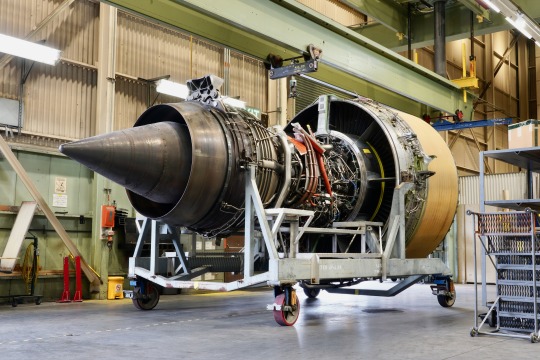

Pratt & Whitney PW4000 engine used on a Boeing 777 aircraft CE. San Francisco International Airport 2024.
#airport#airplane#aviation#boeing#united airlines#planes#aircraft#flying#maintenance#airplanes#jet engines#jet engine#pratt and whitney#Pratt & whitney#pw4000#avgeek#planespotting
71 notes
·
View notes
Text
Deb Chachra's "How Infrastructure Works": Mutual aid, the built environment, the climate, and a future of comfort and abundance
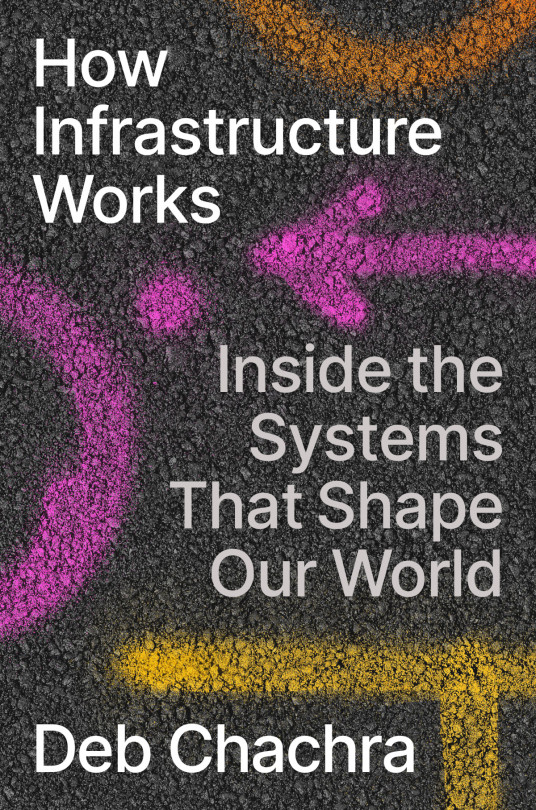
This Thursday (Oct 19), I'm in Charleston, WV to give the 41st annual McCreight Lecture in the Humanities. And on Friday (Oct 20), I'm at Charleston's Taylor Books from 12h-14h.

Engineering professor and materials scientist Deb Chachra's new book How Infrastructure Works is a hopeful, lyrical – even beautiful – hymn to the systems of mutual aid we embed in our material world, from sewers to roads to the power grid. It's a book that will make you see the world in a different way – forever:
https://www.penguinrandomhouse.com/books/612711/how-infrastructure-works-by-deb-chachra/
Chachra structures the book as a kind of travelogue, in which she visits power plants, sewers, water treatment plants and other "charismatic megaprojects," connecting these to science, history, and her own memoir. In so doing, she doesn't merely surface the normally invisible stuff that sustains us all, but also surfaces its normally invisible meaning.
Infrastructure isn't merely a way to deliver life's necessities – mobility, energy, sanitation, water, and so on – it's a shared way of delivering those necessities. It's not just that economies of scale and network effects don't merely make it more efficient and cheaper to provide these necessities to whole populations. It's also that the lack of these network and scale effects make it unimaginable that these necessities could be provided to all of us without being part of a collective, public project.
Think of the automobile versus public transit: if you want to live in a big, built up city, you need public transit. Once a city gets big enough, putting everyone who needs to go everywhere in a car becomes a Red Queen's Race. With that many cars on the road, you need more roads. More roads push everything farther apart. Once everything is farther apart, you need more cars.
Geometry hates cars. You can't bargain with geometry. You can't tunnel your way out of this. You can't solve it with VTOL sky-taxis. You can't fix it with self-driving cars whose car-to-car comms let them shave down their following distances. You need buses, subways and trams. You need transit. There's a reason that every plan to "disrupt" transportation ends up reinventing the bus:
https://stanforddaily.com/2018/04/09/when-silicon-valley-accidentally-reinvents-the-city-bus/
Even the cities we think of as motorists' paradises – such as LA – have vast, extensive transit systems. They suck – because they are designed for poor people – but without them, the city would go from traffic-blighted to traffic-destroyed.
The dream of declaring independence from society, of going "off-grid," of rejecting any system of mutual obligation and reliance isn't merely an infantile fantasy – it also doesn't scale, which is ironic, given how scale-obsessed its foremost proponents are in their other passions. Replicating sanitation, water, rubbish disposal, etc to create individual systems is wildly inefficient. Creating per-person communications systems makes no sense – by definition, communications involves at least two people.
So infrastructure, Chachra reminds us, is a form of mutual aid. It's a gift we give to ourselves, to each other, and to the people who come after us. Any rugged individualism is but a thin raft, floating on an ocean of mutual obligation, mutual aid, care and maintenance.
Infrastructure is vital and difficult. Its amortization schedule is so long that in most cases, it won't pay for itself until long after the politicians who shepherded it into being are out of office (or dead). Its duty cycle is so long that it can be easy to forget it even exists – especially since the only time most of us notice infrastructure is when it stops working.
This makes infrastructure precarious even at the best of times – hard to commit to, easy to neglect. But throw in the climate emergency and it all gets pretty gnarly. Whatever operating parameters we've designed into our infra, whatever maintenance regimes we've committed to for it, it's totally inadequate. We're living through a period where abnormal is normal, where hundred year storms come every six months, where the heat and cold and wet and dry are all off the charts.
It's not just that the climate emergency is straining our existing infrastructure – Chachra makes the obvious and important point that any answer to the climate emergency means building a lot of new infrastructure. We're going to need new systems for power, transportation, telecoms, water delivery, sanitation, health delivery, and emergency response. Lots of emergency response.
Chachra points out here that the history of big, transformative infra projects is…complicated. Yes, Bazalgette's London sewers were a breathtaking achievement (though they could have done a better job separating sewage from storm runoff), but the money to build them, and all the other megaprojects of Victorian England, came from looting India. Chachra's family is from India, though she was raised in my hometown of Toronto, and spent a lot of her childhood traveling to see family in Bhopal, and she has a keen appreciation of the way that those old timey Victorian engineers externalized their costs on brown people half a world away.
But if we can figure out how to deliver climate-ready infra, the possibilities are wild – and beautiful. Take energy: we've all heard that Americans use far more energy than most of their foreign cousins (Canadians and Norwegians are even more energy-hungry, thanks to their heating bills).
The idea of providing every person on Earth with the energy abundance of an average Canadian is a horrifying prospect – provided that your energy generation is coupled to your carbon emissions. But there are lots of renewable sources of energy. For every single person on Earth to enjoy the same energy diet as a Canadian, we would have to capture a whopping four tenths of a percent of the solar radiation that reaches the Earth. Four tenths of a percent!
Of course, making solar – and wind, tidal, and geothermal – work will require a lot of stuff. We'll need panels and windmills and turbines to catch the energy, batteries to store it, and wires to transmit it. The material bill for all of this is astounding, and if all that material is to come out of the ground, it'll mean despoiling the environments and destroying the lives of the people who live near those extraction sites. Those are, of course and inevitably, poor and/or brown people.
But all those materials? They're also infra problems. We've spent millennia treating energy as scarce, despite the fact that fresh supplies of it arrive on Earth with every sunrise and every moonrise. Moreover, we've spent that same period treating materials as infinite despite the fact that we've got precisely one Earth's worth of stuff, and fresh supplies arrive sporadically, unpredictably, and in tiny quantities that usually burn up before they reach the ground.
Chachra proposes that we could – we must – treat material as scarce, and that one way to do this is to recognize that energy is not. We can trade energy for material, opting for more energy intensive manufacturing processes that make materials easier to recover when the good reaches its end of life. We can also opt for energy intensive material recovery processes. If we put our focus on designing objects that decompose gracefully back into the material stream, we can build the energy infrastructure to make energy truly abundant and truly clean.
This is a bold engineering vision, one that fuses Chachra's material science background, her work as an engineering educator, her activism as an anti-colonialist and feminist. The way she lays it out is just…breathtaking. Here, read an essay of hers that prefigures this book:
https://tinyletter.com/metafoundry/letters/metafoundry-75-resilience-abundance-decentralization
How Infrastructure Works is a worthy addition to the popular engineering books that have grappled with the climate emergency. The granddaddy of these is the late David MacKay's open access, brilliant, essential, Sustainable Energy Without the Hot Air, a book that will forever change the way you think about energy:
https://memex.craphound.com/2009/04/08/sustainable-energy-without-the-hot-air-the-freakonomics-of-conservation-climate-and-energy/
The whole "Without the Hot Air" series is totally radical, brilliant, and beautiful. Start with the Sustainable Materials companion volume to understand why everything can be explained by studying, thinking about and changing the way we use concrete and aluminum:
https://memex.craphound.com/2011/11/17/sustainable-materials-indispensable-impartial-popular-engineering-book-on-the-future-of-our-built-and-made-world/
And then get much closer to home – your kitchen, to be precise – with the Food and Climate Change volume:
https://pluralistic.net/2021/01/06/methane-diet/#3kg-per-day
Reading Chachra's book, I kept thinking about Saul Griffith's amazing Electrify, a shovel-ready book about how we can effect the transition to a fully electrified America:
https://pluralistic.net/2021/12/09/practical-visionary/#popular-engineering
Chachra's How Infrastructure Works makes a great companion volume to Electrify, a kind of inspirational march to play accompaniment on Griffith's nuts-and-bolts journey. It's a lyrical, visionary book, charting a bold course through the climate emergency, to a world of care, maintenance, comfort and abundance.

If you'd like an essay-formatted version of this post to read or share, here's a link to it on pluralistic.net, my surveillance-free, ad-free, tracker-free blog:
https://pluralistic.net/2023/10/17/care-work/#charismatic-megaprojects


My next novel is The Lost Cause, a hopeful novel of the climate emergency. Amazon won't sell the audiobook, so I made my own and I'm pre-selling it on Kickstarter!
#pluralistic#books#reviews#deb chachra#debcha#engineering#infrastructure#free energy#material science#abundance#scarcity#mutual aid#maintenance#99 percent invisible#colonialism#gift guide
262 notes
·
View notes
Text
they should make more machinery that is partially organic. or just really Acts organic. i want a massive facility where the humming and pulsing of metal and wires is so similar to a heartbeat i can't be sure if it isn't one
#heresay testifies#this post is about computer vore btw#i want maintenance shafts that can constrict around me like a throat. engine rooms so warm and dark and musty it's almost like a stomach.#you understand. reblog#techum#mechanophilia#machine objectum#suggestive#objectum
28 notes
·
View notes
Text

The air sensor, also known as the Mass Air Flow (MAF) sensor, plays a vital role in the engine by measuring the amount of air entering the engine and sending this data to the engine control unit (ECU). The ECU uses this information to calculate the proper amount of fuel to inject, ensuring efficient combustion.
Signs of a Damaged Air Sensor:
1. Engine Jerk at Idle: If the air sensor is damaged, the engine may shake or jerk when idle, as the fuel-to-air ratio is disrupted.
2. Reduced Torque: A malfunctioning sensor can result in incorrect fuel injection, leading to reduced engine power and torque.
3. Irregular RPM: Fluctuating or inconsistent RPM readings can indicate a problem with the air sensor, as it fails to correctly measure incoming air.
4. Increased Fuel Consumption: An inaccurate air reading causes improper fuel injection, leading to inefficient combustion and higher fuel consumption.
5. Engine Won’t Start: In some cars, a faulty air sensor can prevent the engine from starting, although this issue is specific to certain vehicle models.
6. Check Engine Light: The dashboard’s check engine light may turn on, signaling an issue with the air sensor. A diagnostic scan can confirm the specific fault.
Cause of Damage:
The most common cause of air sensor failure is dirt accumulation, which reduces its accuracy and eventually leads to malfunction.
To maintain engine performance, it’s important to regularly clean or replace the air sensor when necessary.
15 notes
·
View notes
Text
What was everybody's nightly random brain spiral this fine evening (it's 5am)?
Mine was spending 3+hrs deep diving into researching the US military nuclear naval officer program due to a recruitment email I got in my school email (I'm an engineering major rn) despite the fact that I knew realistically I have too many medical conditions to qualify.
At the end of my brain spiral, I found an official document listing every disqualifying medical condition and I disqualify on a MINIMUM of 4 separate accounts from that list. I was literally WEEPING in laughter. The absolute delulu and audacity I had thinking my chronically-ill ass could even CONSIDER this.
Anyways that's how my evening went.
#cherry rambles#us military#hear me out#their nupoc program is SO financially appealing#and im fascinated by life on the sea#dont get me wrong its bloody grueling af and i basically sweeped the entire usnavy subreddit for all the first-hand accounts i could get#and the nuclear sectors i was looking at was more maintenance and supervision of nuclear power plants and stuff#not nuclear warfare 💀#and the career opportunities post-service in engineering/trade was rlly appealing#im atp in life where i just wanna try out random and novel experiences and opportunities bc why tf not#give up the next 5-6 years of my life to the military in exchange for life-long financial stability and fascinating experiences#with a sprinkle of trauma probably#BUT ITS FINE#IM TOO SICK LMAOOOOO#I DIDNT EVEN READ THE WHOLE DOCUMENTED MEDICAL LIST#BUT I HAD AT LEAST 4 CONDITIONS ON THAT LIST LMAOOOO
7 notes
·
View notes
Text
EXAM TODAY

19 notes
·
View notes
Text
Skill Gaps Persist—International Recruitment Delivers Job-Ready Professionals
Australia continues to face a critical shortage of job-ready professionals in all sectors, especially in engineering, infrastructure, and energy sectors. Many candidates arrive with strong qualifications but lack the practical experience needed to meet project demands. International Recruitment helps close this gap by sourcing and placing talent with the right hands-on skills and industry knowledge.
READ MORE-
#Engineering and Maintenance#Reliability and Maintenance Services#Asset Data Management#Asset Information Management#Design and Drafting Services#Drafting Services in Perth#Convex Engineering Services#Specialised Recruitment Services#Recruitment Agencies Perth#Engineering Consulting Support#Digital Solutions
0 notes
Text
they canceled my flight because the pilot was having a bit of a Final Destination premonition now i gotta sit here thumb in my ass for an hour
7 notes
·
View notes
Note
Does Pakin likes Graph's friends?
No, but Graph is great at surrounding himself with people Pakin can't actually be too mean to.
Graph's best friend is Chanchao, a girl who is obsessed with BL and gives Graph terrible advice to try to seduce Pakin. As far as their classmates know, Chanchao is Graph's girlfriend, a rumor they allow to exist because it keeps people from hitting on either of them. A rumor that absolutely puts Pakin on edge the way Ple does to Payu.
But Chanchao's brother is Shin, boyfriend to Pakin's best racer, Oat. Even though Shin and Pakin hate each other, unless he wants to piss off his top earner, he has to keep his mouth shut.
Graph makes a new friend during Try Me: Nith. Nith is a senior who is a loner, pretty quiet, but he takes notice of Graph and tries to be nice to him. Nith doesn't have many friends, and he feels bad for the boy, so he'll take Graph out bowling or to have fun. It seems like Nith is in love with Graph, which pisses Pakin off, but Nith actually has a crush on Chanchao.
Nith, incidentally, is the half-brother of Pakin's best frenemy, Sin. The same Sin who supplies the drugs that make Pakin and Graph's first time so brutal (Sin also has sex with Win fairly often when Win is on his self-sabotage spirals, so Pakin hates Sin for that). Sin is the wealthiest man in Thailand and absolutely loves his little half-brother.
Later on, when Pakin is scared that Graph is isolating himself and is too lonely while Pakin is busy with work, he brings Rain and Sky to be friends for Graph. Pakin trusts Payu and Prapai wholly and completely, so by extension he trusts their boys.
And whatever trouble those three get into together, Payu and Prapai are wrapped around their boyfriends' little fingers and Pakin can hardly go after his favorite racer or his platonic soulmate (Payu, mechanic of his heart).
#you don't get a lot of Pakin's dynamic with Prapai; but Prapai's family are important business partners#and Pakin genuinely likes any person who shares his interest in bikes and engines#so he and Prapai are closer to equal footing and seem to really get along#and while Payu's role in Pakin's life is more services rendered with maintenance and mechanical work on bikes#Pakin will send CHAI to Payu if need be#Chai isn't just his chief of security- he was Pakin's personal bodyguard when Pakin was a teenager#He is also married to Pakin's cousin- who was raised as if he was a brother#So Chai is very precious to Pakin and usually exclusively for Pakin or Graph's protection#so that he sent Chai to save Rain and Sky says a lot about the regard he holds Payu and Prapai in#Also just to always point out#Prapai makes a deal to have Gun and Petch executed and Pakin NEVER calls in those chips#he never holds Prapai to it#which also says a lot about how much he trusts and believes in him#And by the end of the LITA special novel#Graph has babies he and Pakin adopted together and Rain and Sky are kind of embracing their Uncle Modes#ask#pakin#chanchai#nith#rain#sky#love in the air#lita#love storm#love sky#lita special novel
5 notes
·
View notes
Text



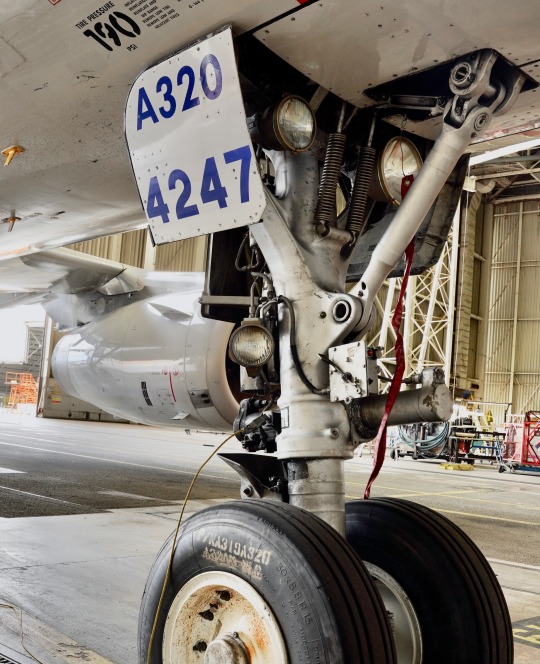
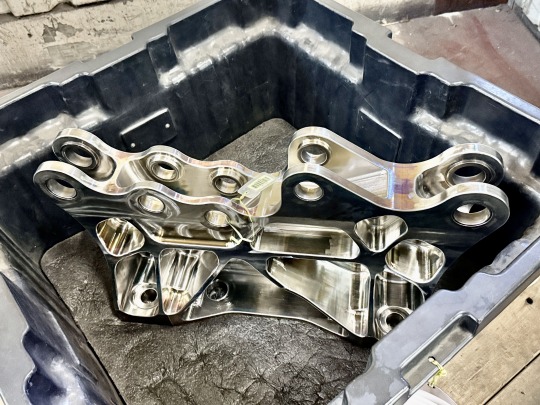




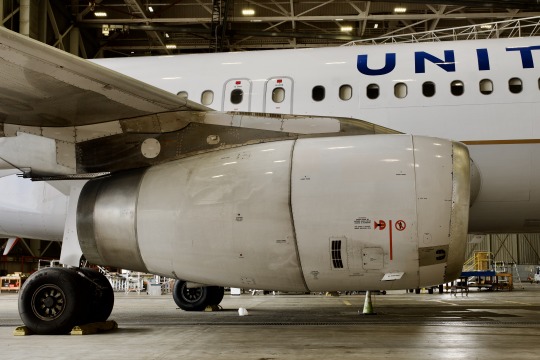














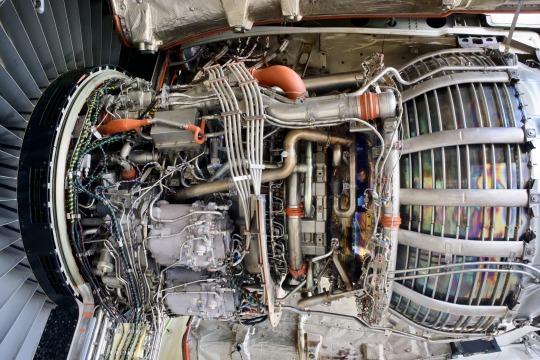


United Airlines random aircraft San Francisco International Airport 2025
#airport#airplane#aviation#boeing#united airlines#planes#aircraft#flying#maintenance#airplanes#airports#san francisco airport#boeing 737#airbus#jet engines#jet engine
9 notes
·
View notes
Text
r/railroading on Reddit is a really interesting source for the practical nitty-gritty of present-day trains (mostly US and freight-oriented). It’s explicitly geared towards people who actually work on railroads vs enthusiasts, which gives a VERY different view of things vs most train media.
I’ve had a post blow up that’s about how Electra accidentally looks very different when compared to the real-life state of US rail electrification, but Greaseball actually falls in line well with the nastier aspects of present-day major freight railroads (which are allll diesel). The electric vs diesel conflict is super compelling from a US rail perspective because it’s been a relevant battle of interests for decades and has a lot of parallels to broader urban vs rural politics. The relationship between Amtrak and major freight railroads m feeds into a lot of the show’s attempted themes surprisingly well.
(If anyone has recommendations for similar sources better for other countries, please link them, I’d actually love that kind of context for ways to culture swap Stex elsewhere or flesh out the Nationals. I know Japan’s competitive and toxic railroad work culture has become more internationally known due to its relation to the Amagasaki Derailment. It’s aggravating how the Japanese Engine has always been a terrible stereotype when the actual problems of Japanese rail are relatively known and provide a lot of characterization potential.)
#stex#starlight express#lol as always i am drawn to practical nitty gritty over romanticization#i am that way with amusement rides too#the funny maintenance problems stupid kiddy rides have vs going on about the wonders of imagineering#probably because i have worked on greaseball-esque diesel locos at a VERY redneck museum#“hehehe i know how to change his traction motor brushes with prybars and screwdrivers without lifting the engine off the tracks”#(i cannot overstate how redneck of a way that is to do that vs what the original manufacturer ever intended LOL)
13 notes
·
View notes
Text
youtube
#youtube video#Aircraft Preservation#Air Force Heritage#tucson#Aircraft Maintenance#arizona#Aviation Enthusiasts#Aerospace Engineering#davis-monthan air force base#Arizona Air Force Base#Aircraft Restoration#aviation#air force#usaf#boneyard#Military History#Aircraft Parts#aircraft#aircraft preservation#aircraft maintenance#aviation enthusiasts#aerospace preservation#aerospace industry#military history#aircraft parts#aircraft collection#us air force#aircraft boneyard#Youtube
5 notes
·
View notes
Text
Guess who finally got her Ikkaku photoshoot pics back??
These are unedited raws but I have a few choice pics I wanted to share with people because I'm quite pleased with them lol.






#Engine’s Pulse (Ikkaku)#Time for Maintenance (OOC)#cosplay pictures#heart pirates#(I literally found that Law den den that day and he was perfect for the shoot)
15 notes
·
View notes